Salamanca, Spain: A Warmth in Winter
 |
| Tormes River with the two cathedrals |
Few cities were as high on my northern Spain hitlist as Salamanca. Yes, there was León, with its wall-to-wall stained-glass cathedral and free tapas action, or Oviedo, Santiago’s cousin out east in Asturias, or even Albarracín, the most beautiful village in Spain. But Salamanca always kept tugging me down there, even after I nearly booked a marathon train journey down there from Galicia and chickened out.
 |
| View of La Clerecía and the old town from the New Cathedral’s bell tower |
The perfect opportunity to swing by this monumental university town presented itself to me this January, when I was dropping off my family at the Madrid airport after having shown them all around the capital, Segovia, and Santiago for a week. On my way back northwest to Santiago, I took advantage of being so far south to make the trek out to Salamanca before riding the trenhotel home.
A break from the Castilian cold
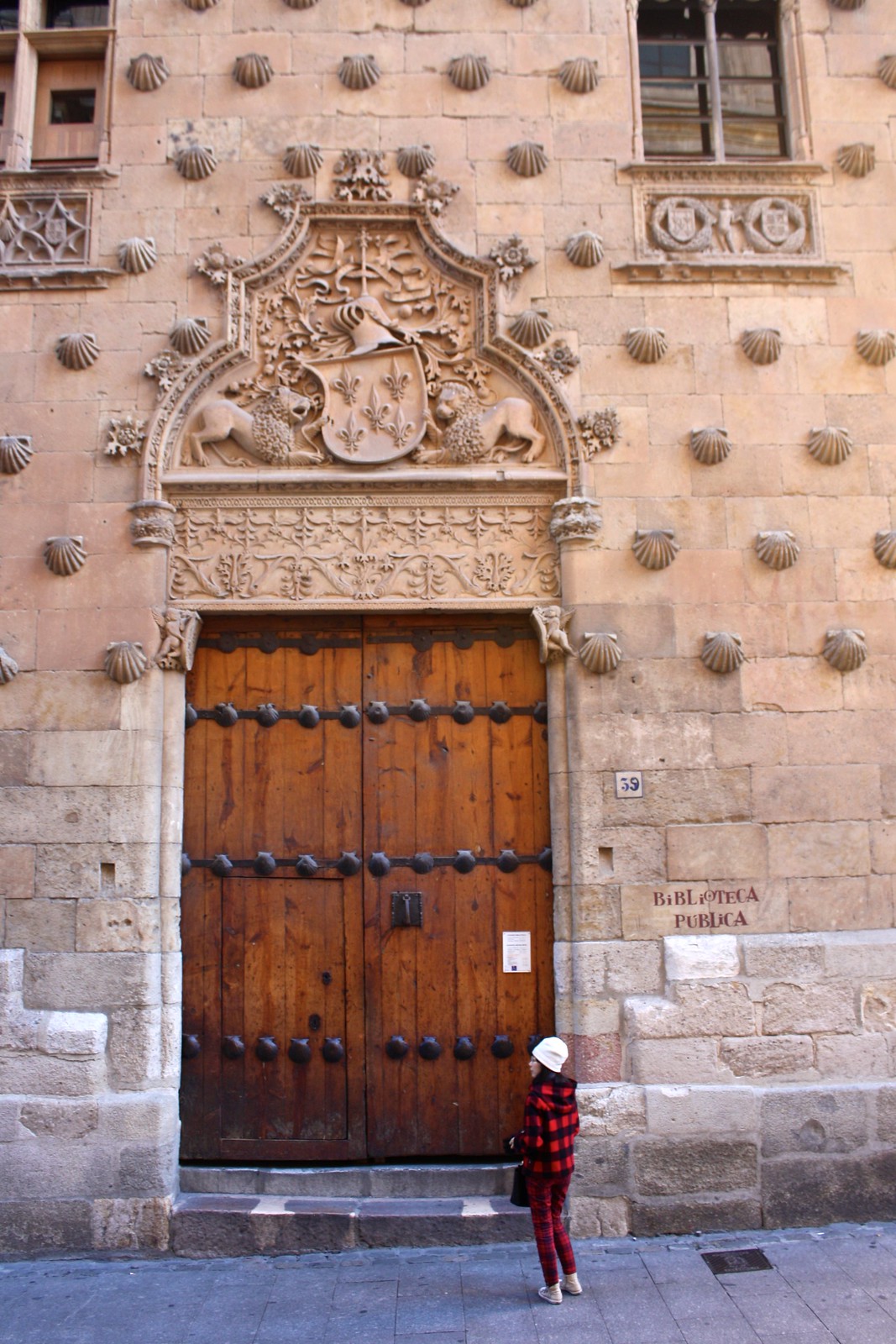 |
| Casa de las Conchas: The Shells House |
Contrary to any stereotypes you might have about Spain, it gets cold in the winter here—really cold. It isn’t hot and sunny year-round here unless you live in the Canaries or Málaga or something. In fact, (and I’m sure folks from Minnesota or Sweden will laugh at me for this) some of the coldest winters of my life have been in Spain, partly because so much of life is lived outdoors, mainly because my apartments haven’t had central heating…but I digress.
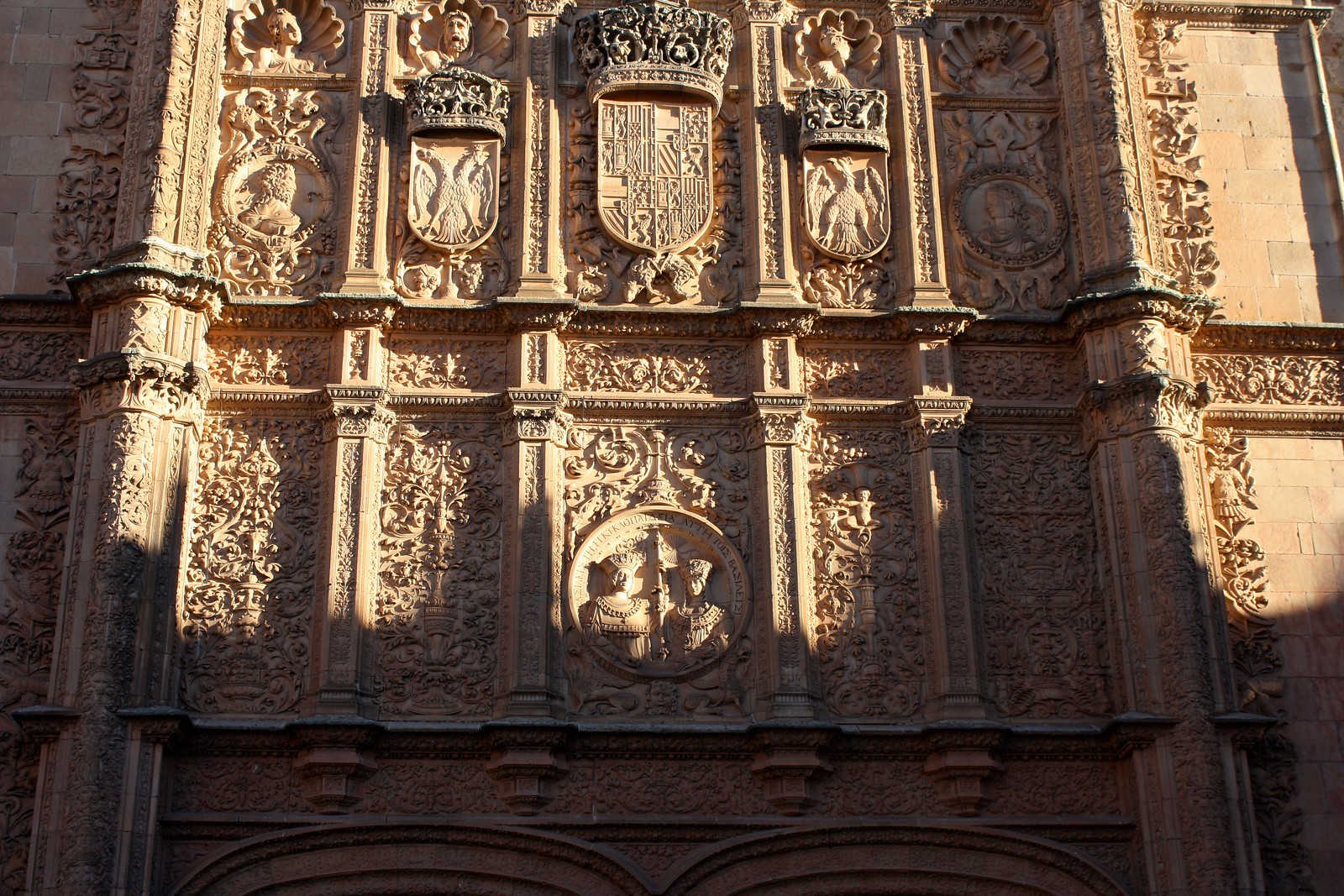 |
| The out-of-control university façade |
While I was showing my family around Segovia, just north of Madrid, it was so i c y—overcast skies with light rain, powerful winds careening down from the plains, and near-freezing temperatures. Fortunately by the time we got to Santiago in Spain’s far northwest corner, the sun had decided to come out for a change; there wasn’t a single cloud in the sky both days we were in Galicia! But in Segovia and Santiago you couldn’t leave the hotel without putting on scarves, gloves, and winter coats, and sometimes an extra pair of socks. In case you couldn’t tell, winter is my least favorite season.
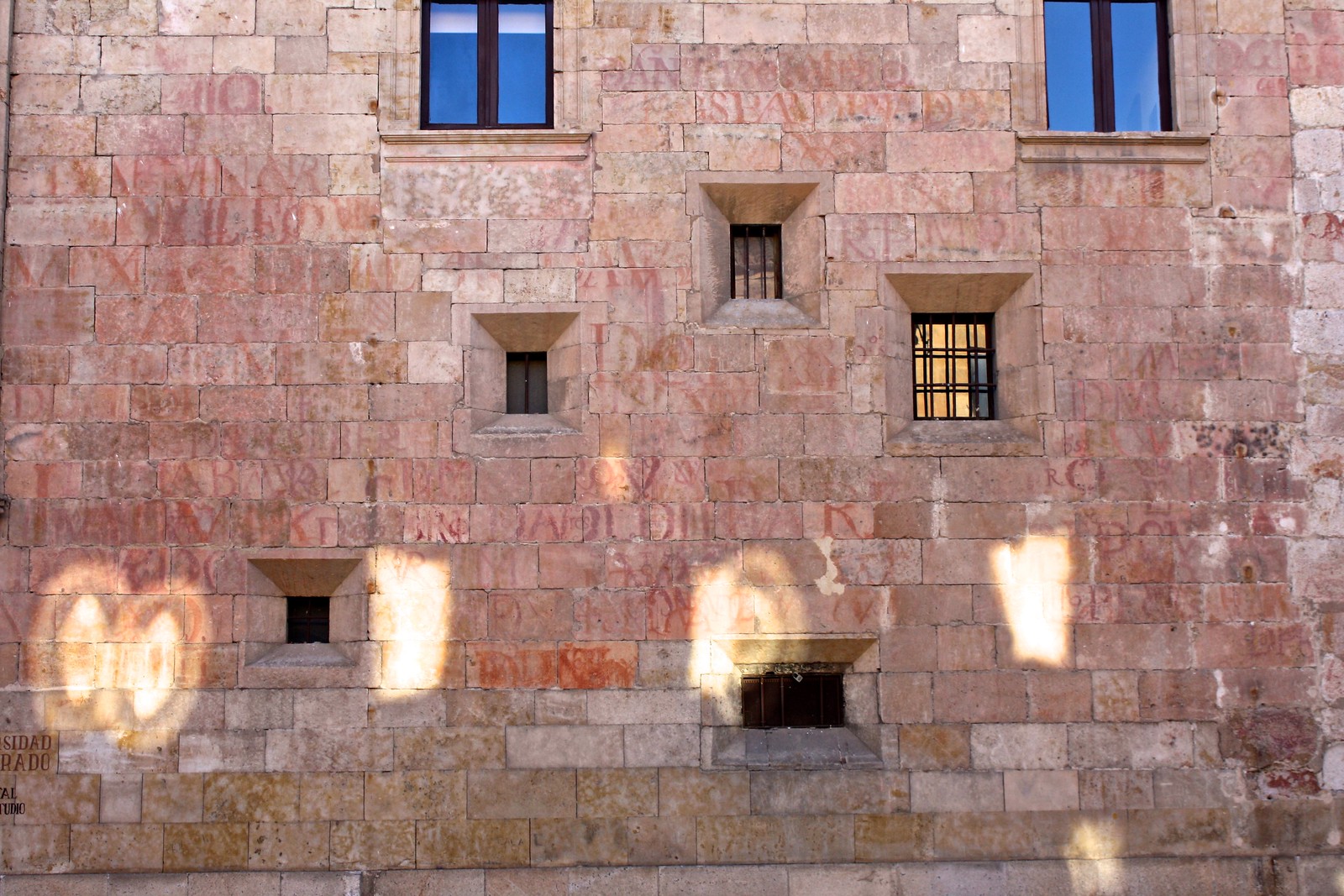 |
| Centuries of faded paint |
So I welcomed the change of winds when I hopped off the MD train in Salamanca, a little under three hours west of Madrid beyond the granite boulder-strewn Guadarrama mountain range and the flat Castilian plains. The sun shined from a clear blue sky, making the sandstone old town glow in its afternoon rays. Everybody and their mom (literally) was out and about enjoying a paseo by walking the city’s grand avenues and nibbling on tapas like snails or tiny sandwiches of locally-made cured ham. As I walked across the “Roman” bridge to the other side of the Tormes River, I actually ended up working up a sweat! It was a refreshing change to take off my coat and soak up some sun on New Year’s Day.
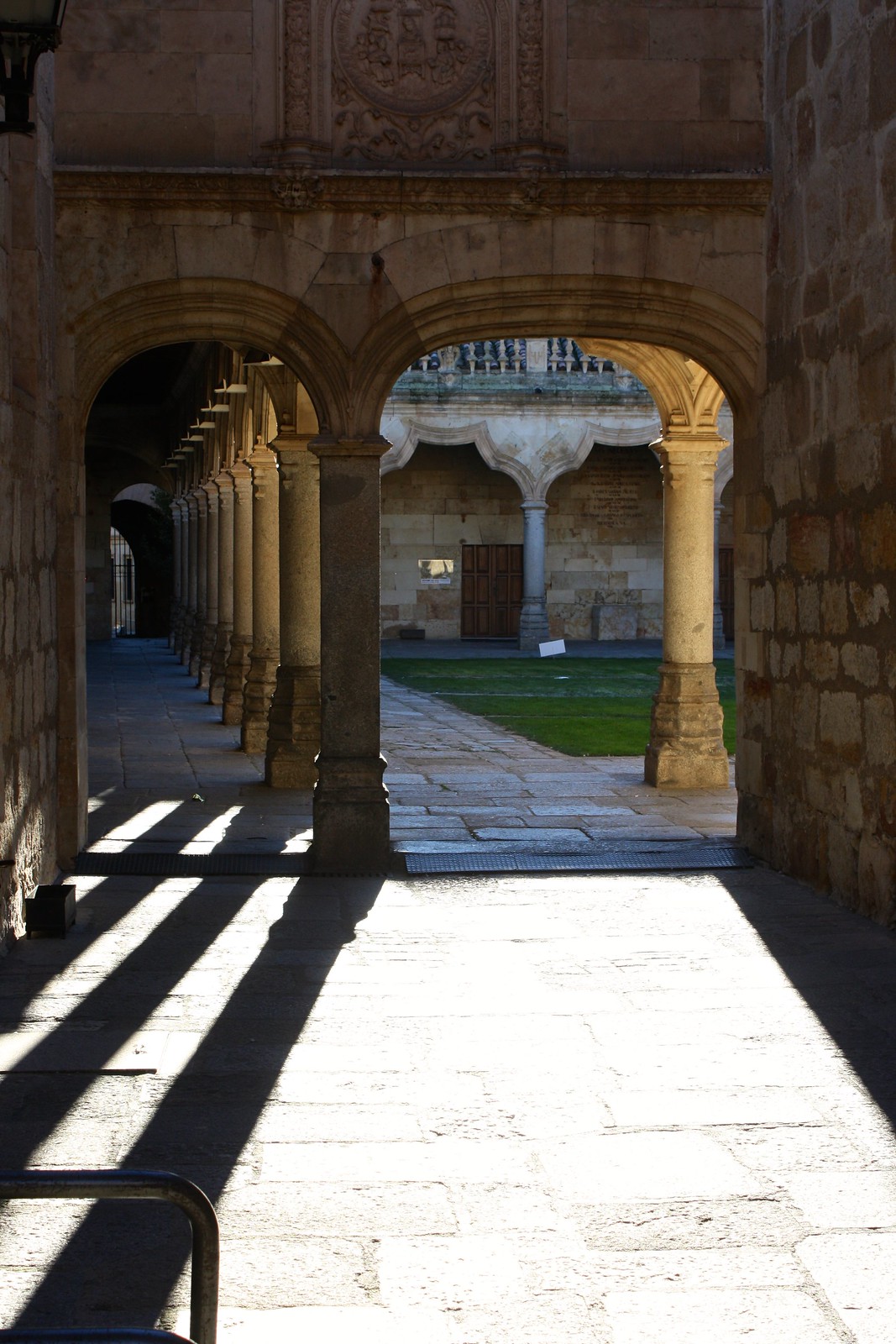 |
| Renaissance patio in the university |
My Blue Hour photography mission
 |
| West façade, New Cathedral |
As the afternoon waned, things inevitably grew a bit chillier—but I wasn’t mad because that meant the Blue Hour was approaching! It’s basically my favorite time to take pictures as the sky turns a rich, deep blue and monumental buildings get washed in warm, golden illumination. This brief window opens up not long after the sun sets (usually for only 15 minutes or so), and during this time the dark blue contrasts with the yellow lighting, adding a touch of drama to all photos you take.
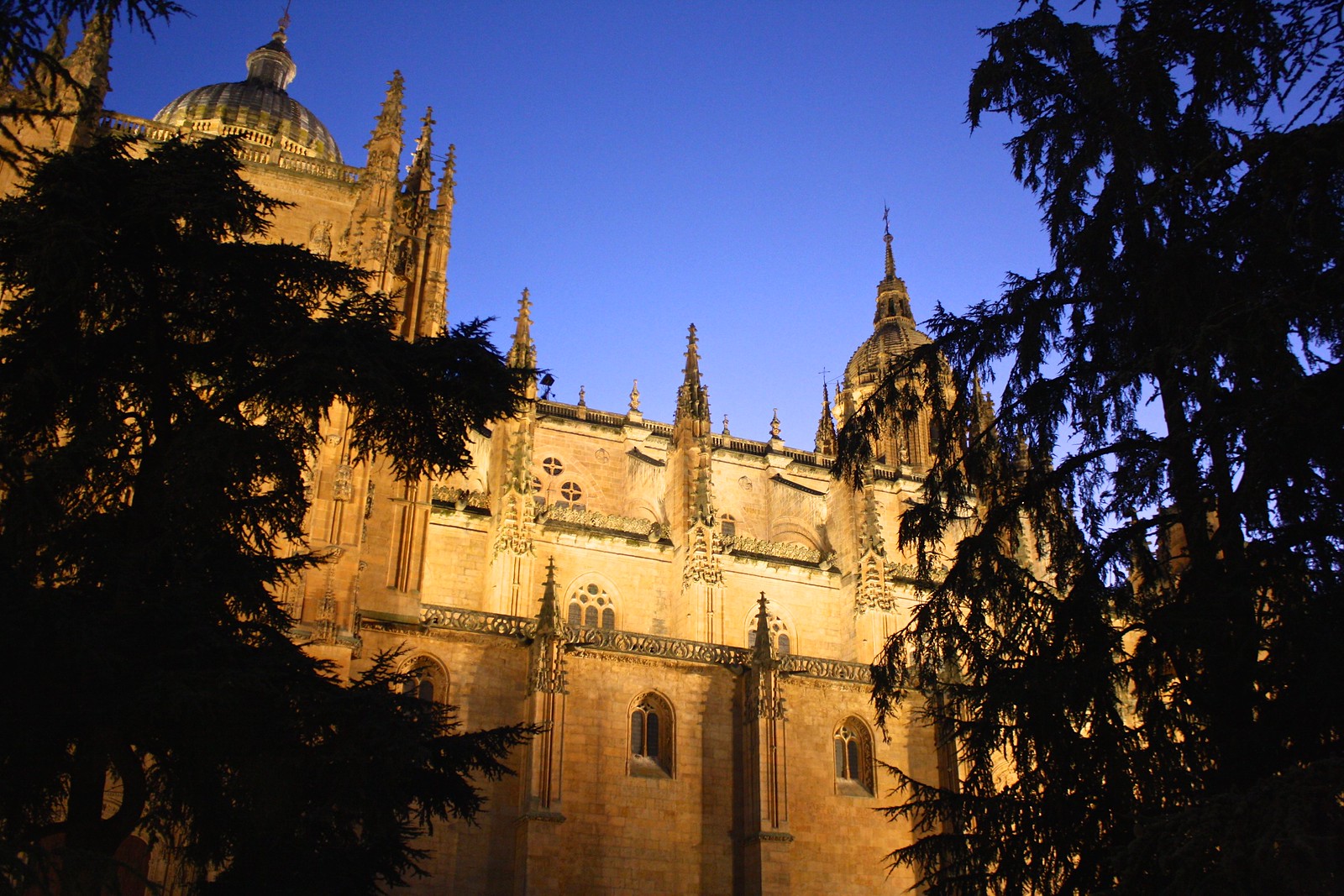 |
| North façade, New Cathedral |
I only booked a single night’s stay in my hotel, so I had one chance to capture Salamanca during the Blue Hour. The pressure was on, so after putting together a hitlist of buildings and scenes I wanted to photograph, I put on my comfy shoes, slung my camera around my neck, and headed out to the old town. At one point I was actually running down Salamanca’s main drag in a race against time; there was so much to take pictures of but only 15 minutes to do it all in! The earth stops turning for no one, but I did manage to photograph everything I wanted to.
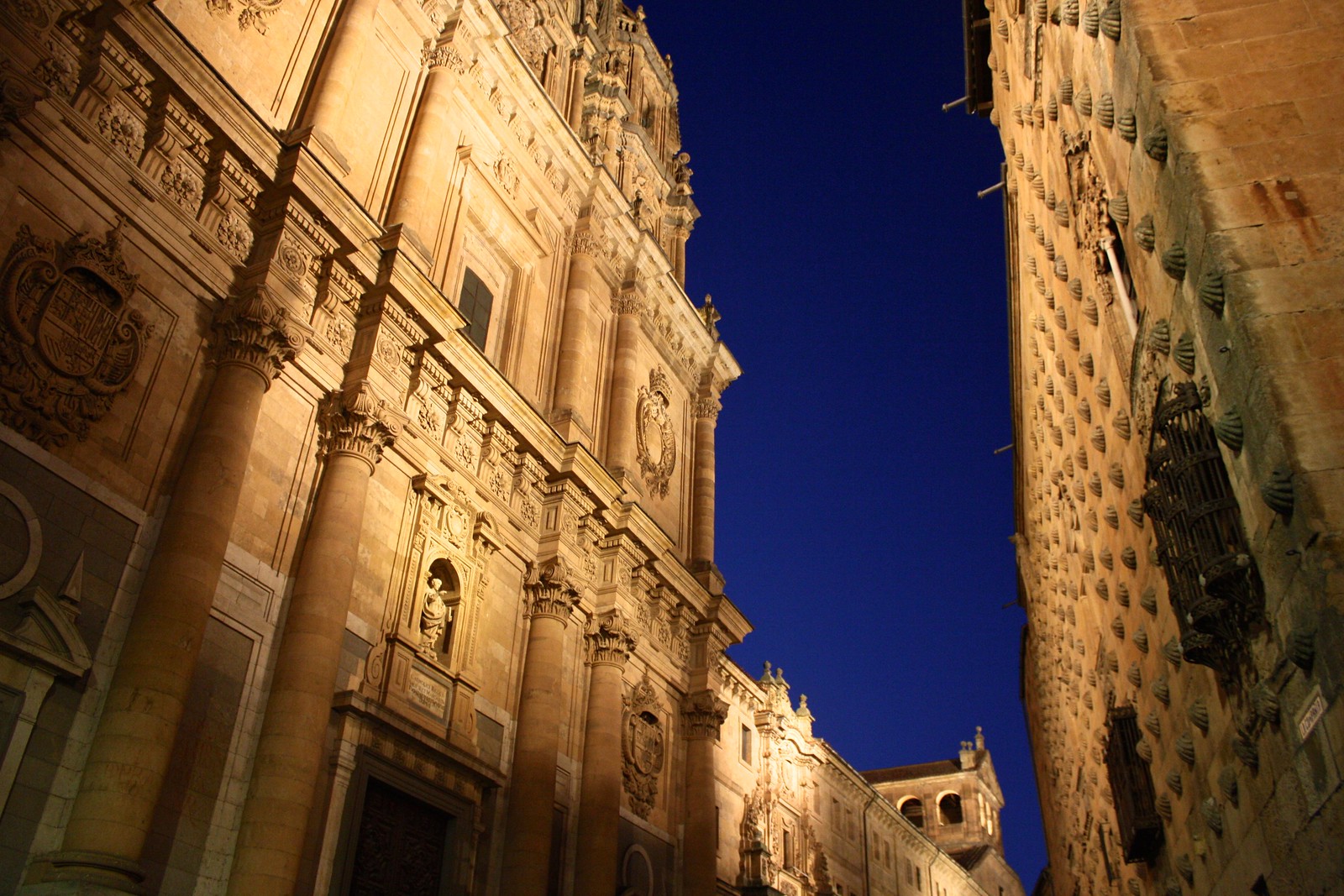 |
| La Clerecía |
While running around Salamanca like a chicken with its head cut off, I was reminded of my two hometowns in Spain, Úbeda and Santiago de Compostela. My first year teaching English here I lived in a small southern village recognized as a World Heritage Site for its Renaissance architecture—churches constructed in ideal forms and palaces designed with pure, Roman-inspired decorations. Both Úbeda and Salamanca were built in warm local sandstone that instantly makes you feel at home, although Salamanca’s towering monuments were a bit too imposing for me.
I also saw some connections with Santiago: both are home to prestigious, centuries-old universities (Salamanca’s is Europe’s fourth-oldest!) and both contain two of Spain’s most dazzling old cities. And their cathedrals guard the memories of almost a millennium of Western architectural history.
 |
| Christmastime Plaza Mayor |
I finished my Blue Hour hunt in Plaza Mayor, perhaps Spain’s most impressive public square. Less of a touristy mess than Madrid’s square of the same name, but more planned than Santiago’s history-rich Praza do Obradoiro, Salamanca’s Plaza Mayor was impossible to resist. The sun had long set (meaning the bitter Castilian cold rushed back in to take its place), but Plaza Mayor still had a spiritual warmth about it.
Local salamantinos were finishing up their afternoon strolls and outnumbered any camera-toting tourists; fur-coat-clad grannies huddled together on benches while dads carried their kids on their shoulders to gaze at the giant Christmas ornament in the center. The icing on the cake was the exterior lighting that ran all the way around this Baroque masterpiece of emotion and community.
Old Cathedral: mysterious Romanesque
 |
| Byzantine-style dome |
The next day, I got up early to make the most of the too-short 24 hours I had to spend in Salamanca, especially since all the touristy sites were closed on New Year’s Day. Plaza Mayor was lifeless at nine in the morning, but a runny café con leche and some toast layered with locally-produced cured ham breathed new life into my otherwise-groggy self. My sightseeing that day would be limited to the cathedrals of Salamanca. Yes, you read that right: Salamanca has not one but two cathedrals to explore, a unique situation as the vast majority of all cathedrals in Europe sit on the foundations of earlier Romanesque, barbarian, or Roman-era churches. Yet here we get to see medieval times and the Renaissance juxtaposed against each other.
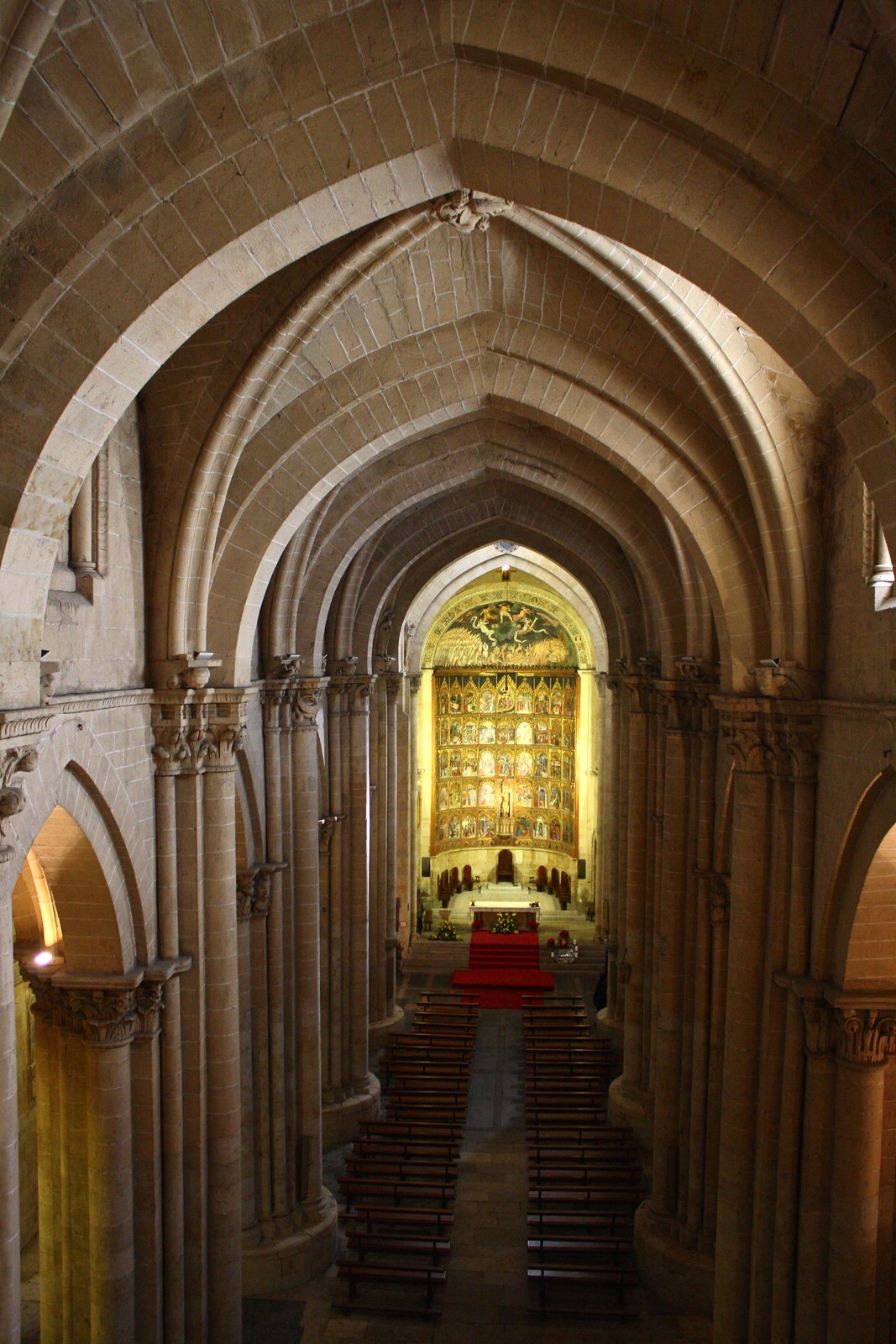 |
| Central nave from the balcony |
I went in chronological order, starting with the catedral vieja, the Old Cathedral. From an architectural standpoint it’s very interesting: while the pointy arches might lead you to think it’s a Gothic church, this cathedral is firmly in the Romanesque camp, as its weighty walls (that predate flying buttresses) allow light to enter only from narrow, punched-out windows.
Right over the main altar, if you look up you’ll see a stunning Byzantine-style dome, crafted in two drums of bright, vertical windows that counter the notion that medieval churches were all dark and gloomy. This unique dome reminded me a lot of similar ones I saw earlier in the fall on Zamora’s cathedral and in the Colegiata de Toro—both of which were only an hour’s drive north in Zamora province.
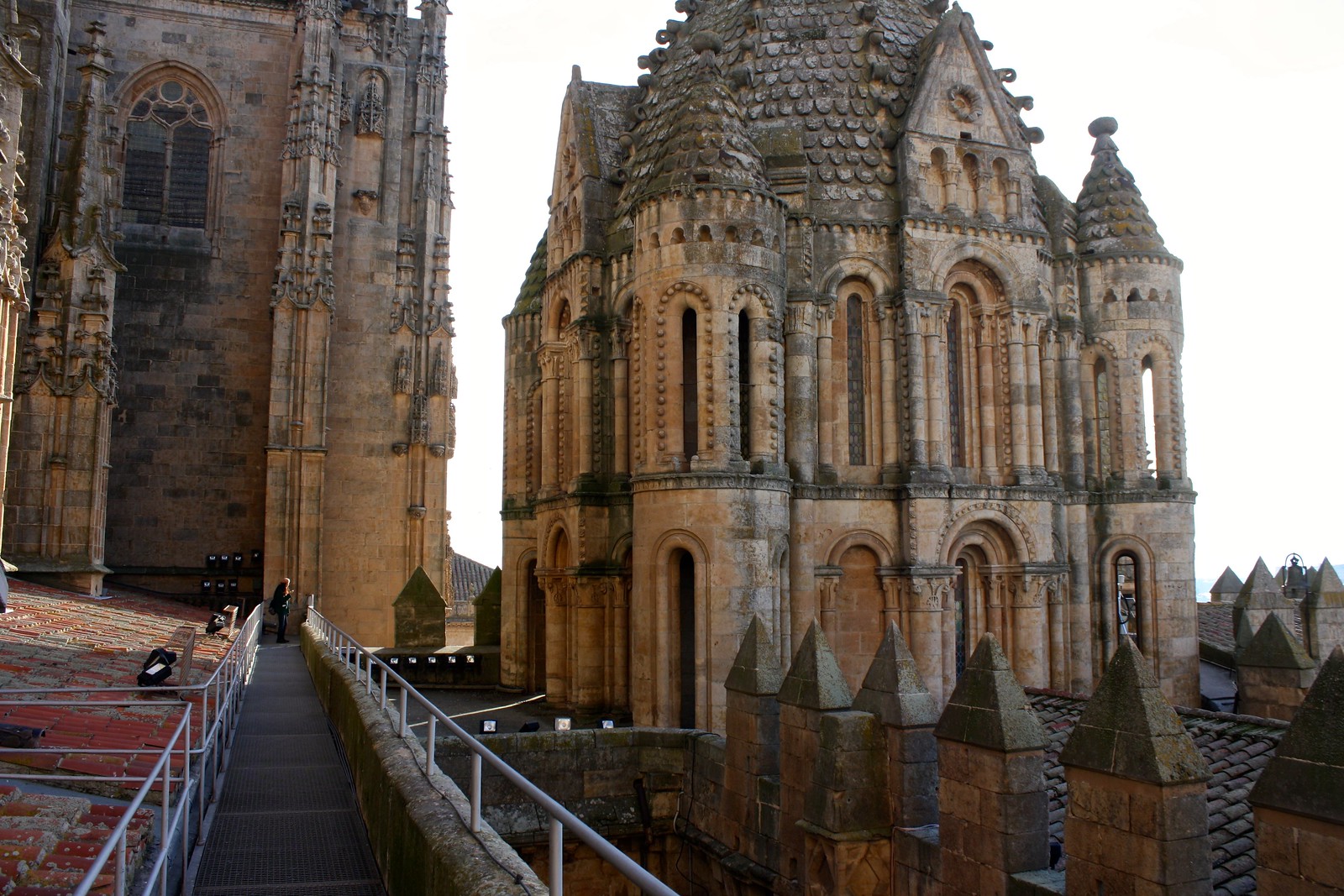 |
| The dome and battlements, shadowed by the New Cathedral |
If you look at the floorplan of Salamanca’s two cathedrals, it’s clear that the New one dwarfs the Old; it’s at least twice the size in all directions! Another thing you’ll notice is that the New Cathedral shares part of its southern wall with the Old Cathedral’s northern edge—and you can see this fusion in action inside the catedral vieja. The arches simply dissolve into the sandstone and invite you to go up into the catedral nueva.
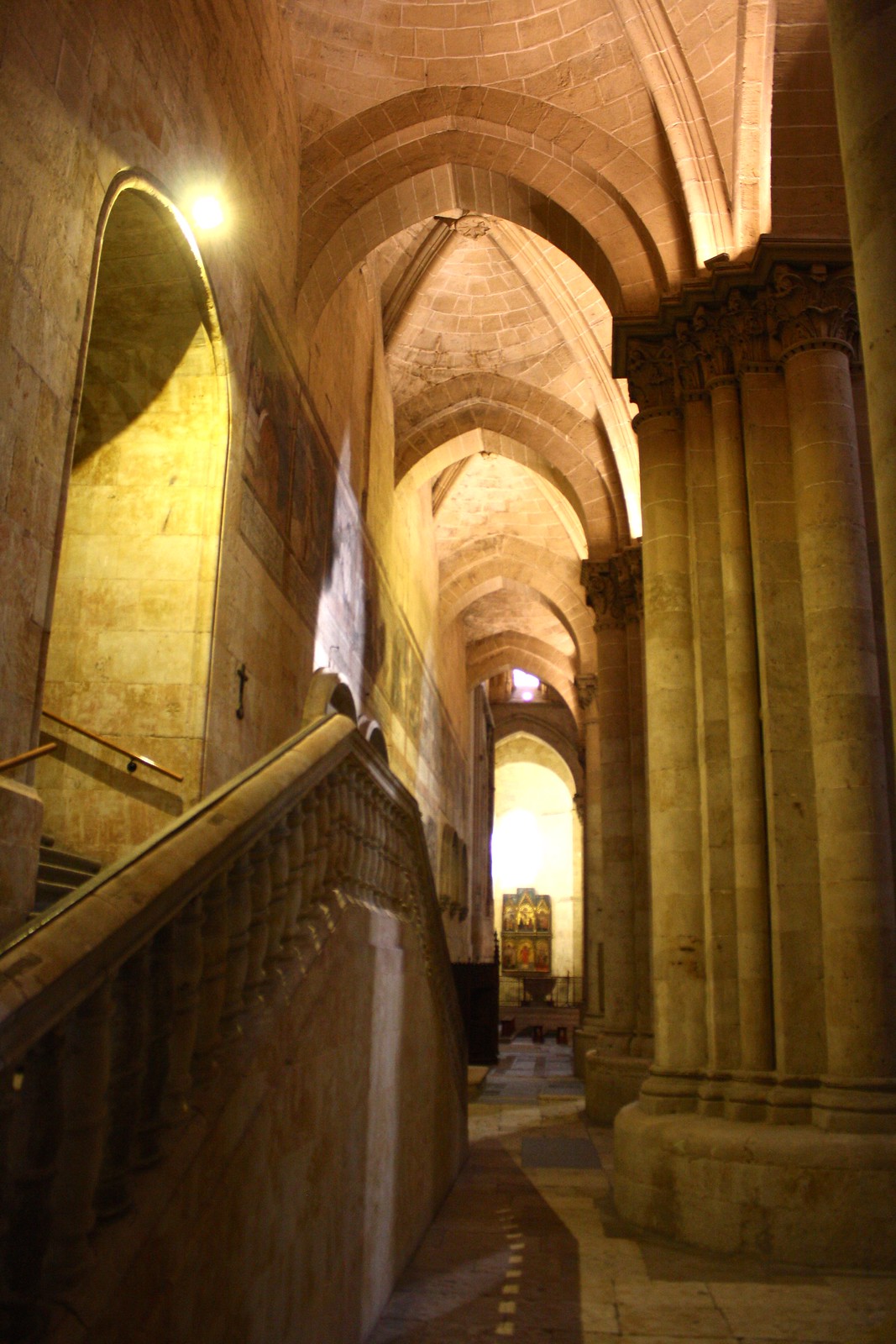 |
| Where the walls of the New Cathedral meet the Old |
New Cathedral: glorious Gothic
 |
| Morning sunshine |
Entering Salamanca’s New Cathedral belongs on my list of Top 10 Cathedral Experiences of All Time. I’ve seen more than my fair share of cathedrals around Spain and Europe, so sometimes when I travel to a new city, the cathedral is “just another cathedral” and nothing too amazing. But the catedral nueva really impressed me, and I had to sit down on the pews to take it all in. The strong morning sunlight was pouring through the wall-to-wall windows and illuminating the intricate ribbing on the ceiling above. I was dazzled.
 |
| Immensity |
Continuing around the aisles of this soaring church, I admired the mixture of architectural styles that influenced its construction from 1513 to 1733. The vast majority of the gargantuan New Cathedral was built in the Late Gothic style, so spindly columns curved upward, ending in pointy arches and delicate ribbed vaults, but the dome over the main altar is an exuberant Baroque intrusion into the sanctuary. The over-the-top decorations, embellishments, and frescoes surrounding the great glass windows made it seem like heaven had come down to earth, which I’m sure was exactly what the original designers intended worshippers to feel.
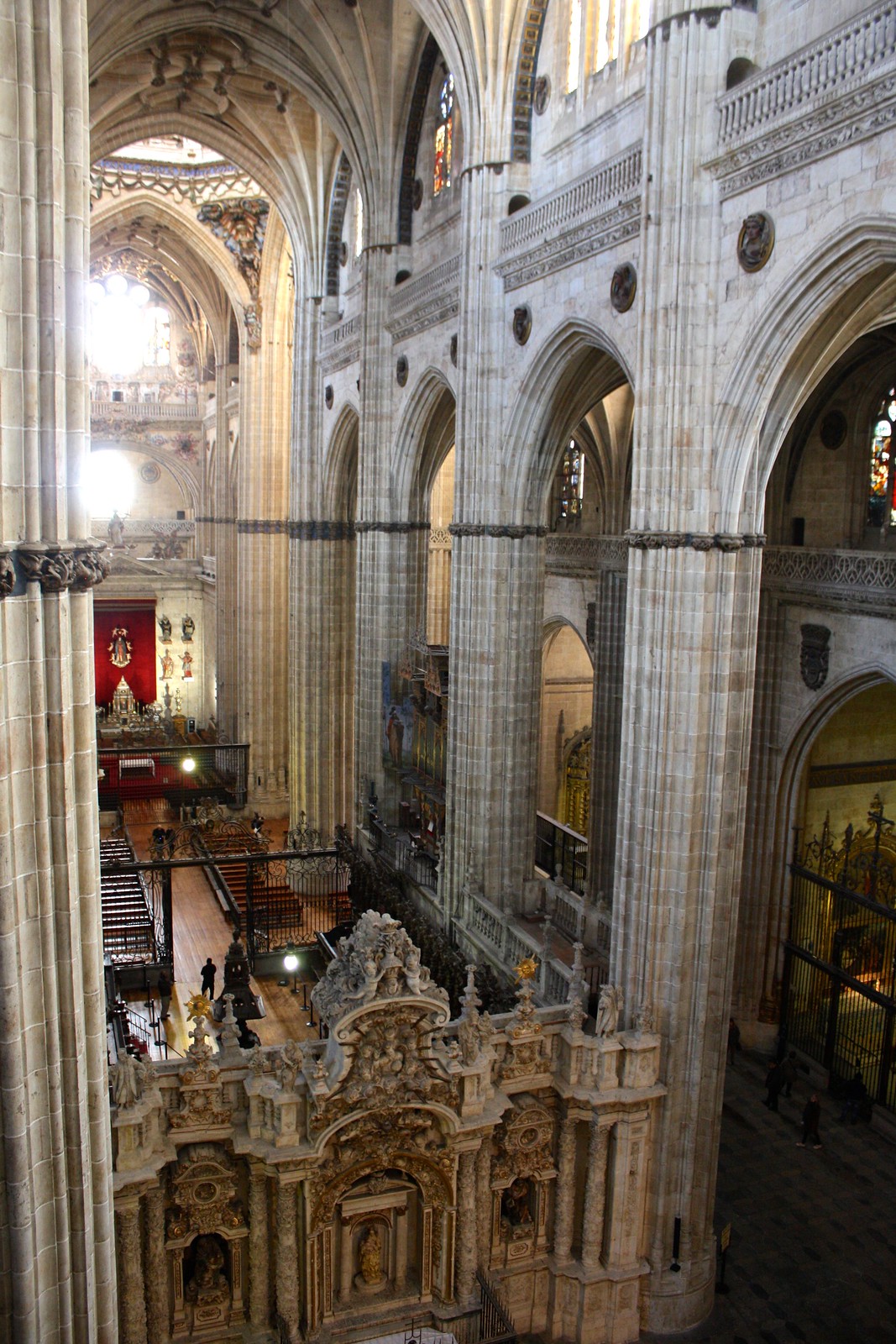 |
| Central nave seen from the upper walkway |
I loved that the Church had opened up the bell towers, rooftops, and balconies of both cathedrals for visits as part of their Ieronimus exhibition. There was a lot of stairs and climbing around to be done, but it offered me a special way to experience two of Spain’s most interesting churches.
I got to go up to the upper balcony in the catedral vieja and get a different perspective of the long, Romanesque central nave…and walk around the unique Byzantine-style dome from the outside. I got to lean up against the railings high above the floor in the catedral nueva…and get on the same level with the Baroque dome while hanging out in the bell tower. Although it was windy and brisk beneath the church bells, the sun was shining again, and I was grateful for the short time I had in this warm, inviting city.
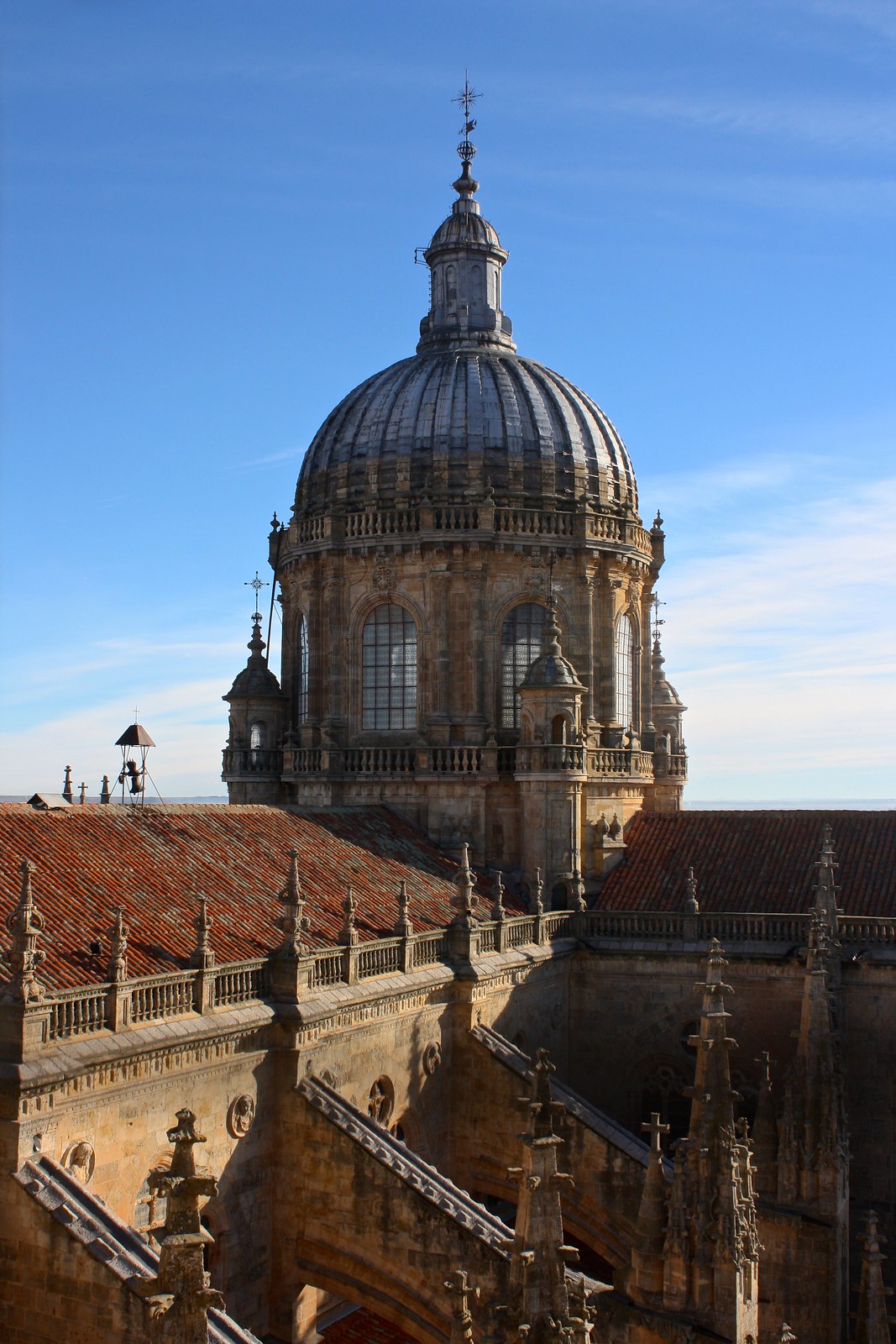 |
| The dome seen from the bell tower |
What were your impressions of Salamanca if you’ve been there before? What’s your favorite cathedral in Spain? Tell me your opinions below in the discussion thread!
